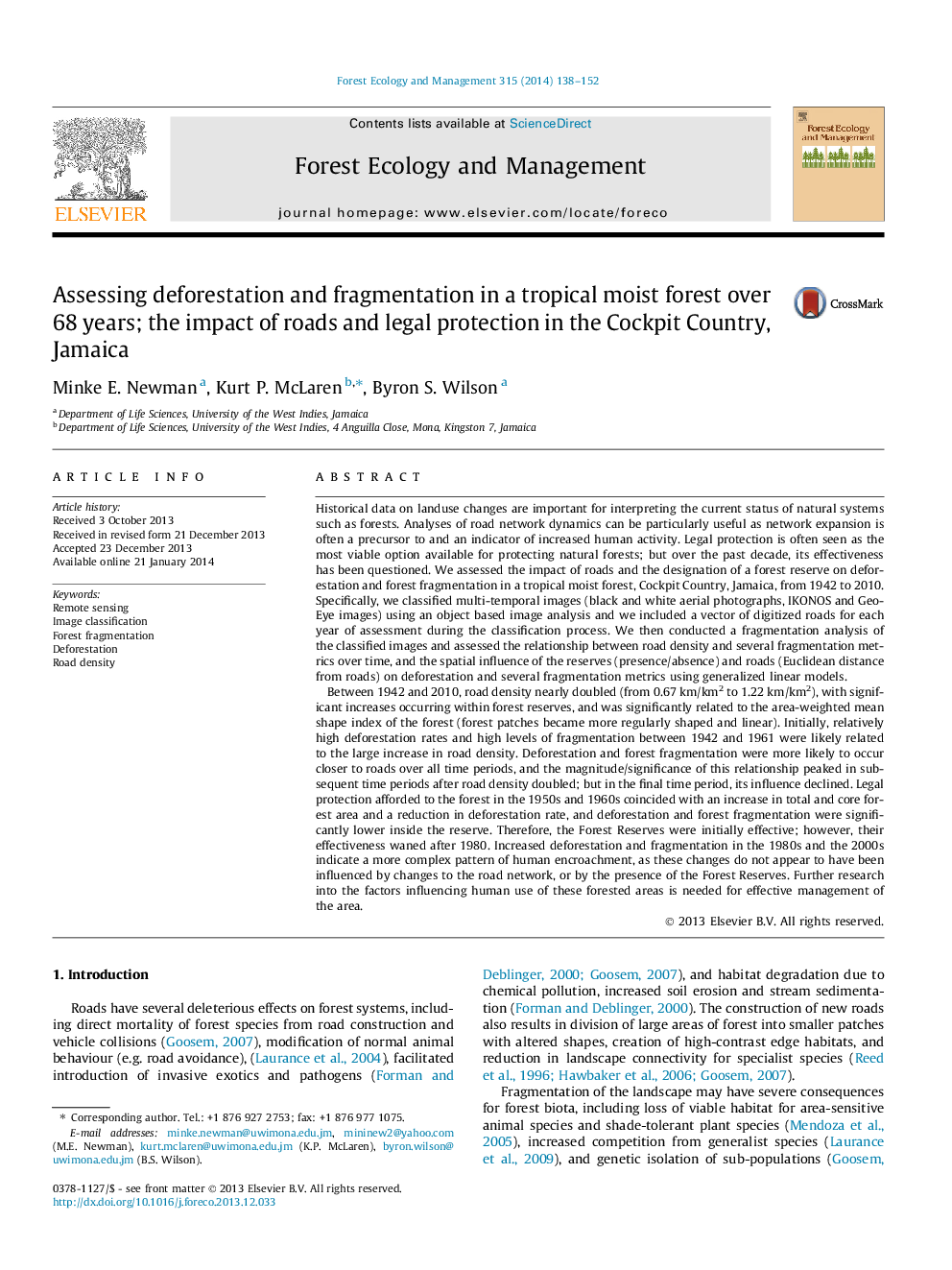| کد مقاله | کد نشریه | سال انتشار | مقاله انگلیسی | نسخه تمام متن |
|---|---|---|---|---|
| 86721 | 159208 | 2014 | 15 صفحه PDF | دانلود رایگان |
• Road density doubled in 68 years and resulted in simplification of forest patch shapes.
• Initial deforestation and fragmentation influenced by road forest reserves.
• Total and core forest increased and forest loss reduced after reserve designation.
• Increased deforestation and fragmentation in the 1980s and the 2000s.
• This is due to complex pattern of human encroachment, not influenced by roads or the reserves.
Historical data on landuse changes are important for interpreting the current status of natural systems such as forests. Analyses of road network dynamics can be particularly useful as network expansion is often a precursor to and an indicator of increased human activity. Legal protection is often seen as the most viable option available for protecting natural forests; but over the past decade, its effectiveness has been questioned. We assessed the impact of roads and the designation of a forest reserve on deforestation and forest fragmentation in a tropical moist forest, Cockpit Country, Jamaica, from 1942 to 2010. Specifically, we classified multi-temporal images (black and white aerial photographs, IKONOS and GeoEye images) using an object based image analysis and we included a vector of digitized roads for each year of assessment during the classification process. We then conducted a fragmentation analysis of the classified images and assessed the relationship between road density and several fragmentation metrics over time, and the spatial influence of the reserves (presence/absence) and roads (Euclidean distance from roads) on deforestation and several fragmentation metrics using generalized linear models.Between 1942 and 2010, road density nearly doubled (from 0.67 km/km2 to 1.22 km/km2), with significant increases occurring within forest reserves, and was significantly related to the area-weighted mean shape index of the forest (forest patches became more regularly shaped and linear). Initially, relatively high deforestation rates and high levels of fragmentation between 1942 and 1961 were likely related to the large increase in road density. Deforestation and forest fragmentation were more likely to occur closer to roads over all time periods, and the magnitude/significance of this relationship peaked in subsequent time periods after road density doubled; but in the final time period, its influence declined. Legal protection afforded to the forest in the 1950s and 1960s coincided with an increase in total and core forest area and a reduction in deforestation rate, and deforestation and forest fragmentation were significantly lower inside the reserve. Therefore, the Forest Reserves were initially effective; however, their effectiveness waned after 1980. Increased deforestation and fragmentation in the 1980s and the 2000s indicate a more complex pattern of human encroachment, as these changes do not appear to have been influenced by changes to the road network, or by the presence of the Forest Reserves. Further research into the factors influencing human use of these forested areas is needed for effective management of the area.
Journal: Forest Ecology and Management - Volume 315, 1 March 2014, Pages 138–152
